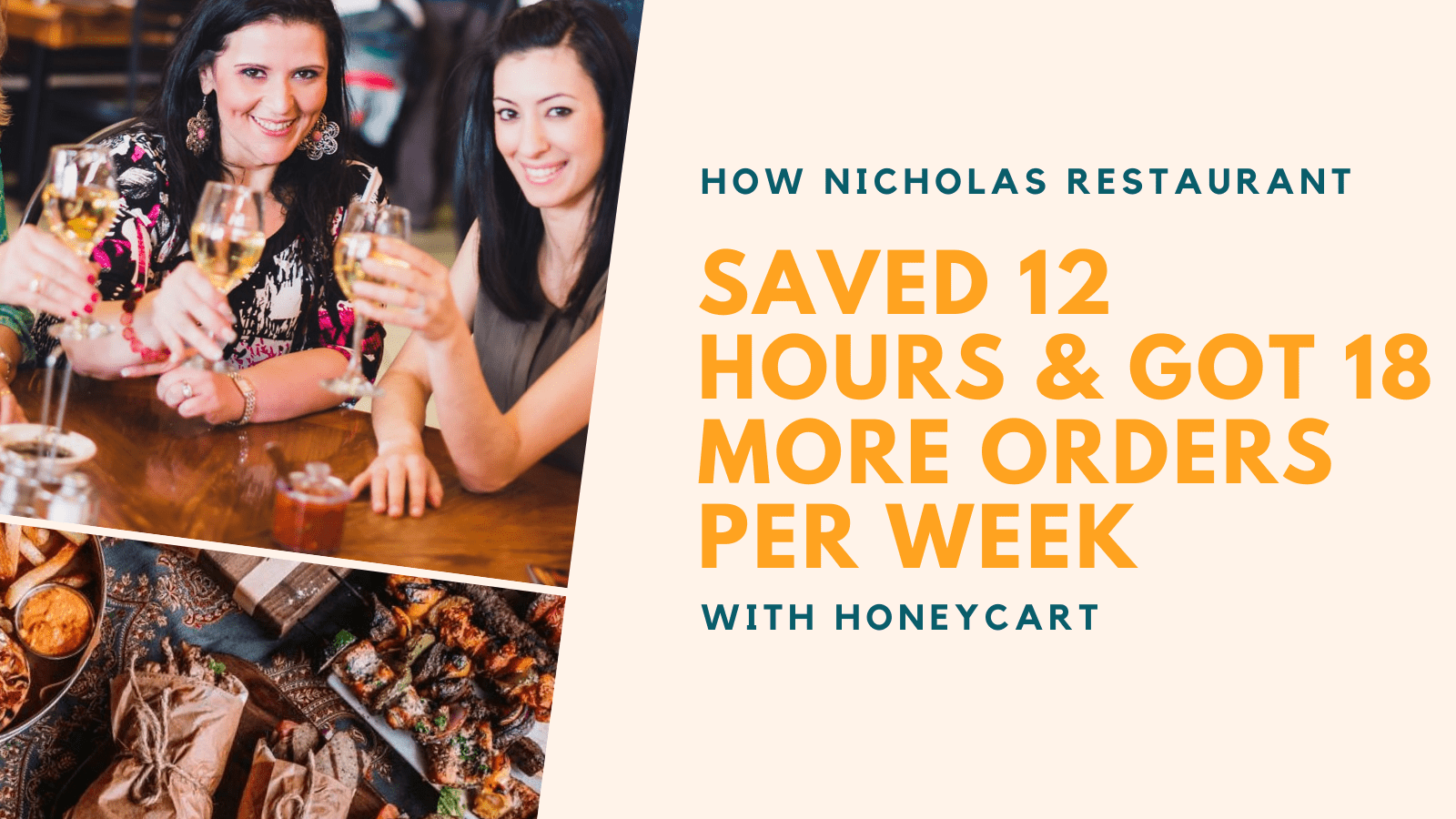“You’re always playing cat and mouse with people trying to get a hold of them.”
When it comes to running a drop-off catering business, I bet playing cat and mouse is something you desperately want to avoid.
But restaurants and drop-off caterers who process catering orders manually have no choice but to play this game with their customers.
Take Nicholas Restaurant for example.
They’ve been in business for over 30 years. During this time, they built a cult following through word-of-mouth, established three locations in Portland OR, and did 40-50 catering orders per week according to Hilda Dibe, the owner.
However, their entire ordering process up to this point was manual. As a result, it made processing orders disorganized, stressful, and time-consuming.
And according to Juan Zamudio, Nicholas Restaurant’s Catering Manager, it took about 20 mins to process one order. This includes receiving calls from customers, writing their orders on paper, and taking payments over the phone.
In his words:
“It took me probably four or five steps to put an order on our calendar. We were entering orders into QuickBooks, and it was a much longer process to enter in the info before I could even get to doing those five steps.”
He continued:
“I’d have to write the order down on paper because I couldn’t do it while I was on the phone. It just was too long of a process to keep the customer waiting. So it was a lot easier to just write it down on paper as the phones were ringing off the hook.”
These were some of the problems Nicholas Restaurant encountered for years when managing catering orders manually.
Then the pandemic hit.
Although they were still able to do pickups and deliveries during the pandemic, it became even more difficult to manage and process orders.
Moreso, whenever the business was closed, customers couldn’t place orders because there was no one to speak to them.
As such, they were leaving money on the table and losing customers to their competitors.
A huge concern for Juan:
“If we weren’t open, customers couldn’t order. If we couldn’t fulfill that order, because we weren’t able to speak to them, it was easy to just find somebody else that could do it online. Without a doubt, I feel like we definitely lost business.”
And business they did lose.
So if their drop-off catering business was to become more profitable in the long run, the decision to use catering software to process orders was a no-brainer.
Juan acknowledged this:
“We were trying to recoup some of those losses that we lost during that time we were closed both from the restaurant and catering.”
Here’s how Nicholas Restaurant did this with HoneyCart commission-free catering software.
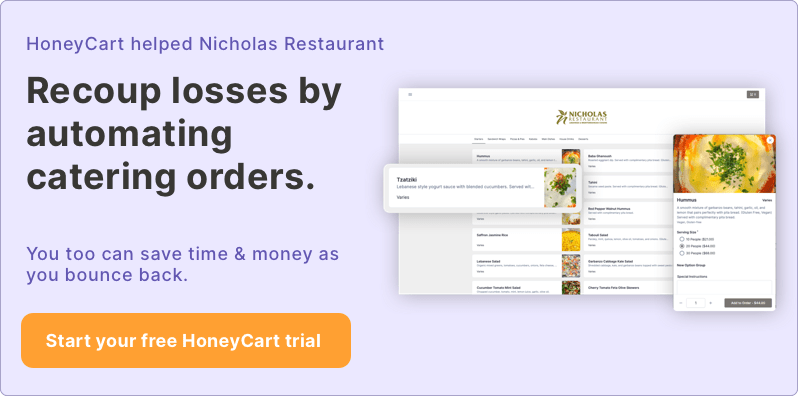
About Nicholas Restaurant
Established in 1987, Nicholas Restaurant specializes in Lebanese & Mediterranean Cuisines.
Their growing business offerings before the pandemic were catering services, party platters, and lunch boxes.
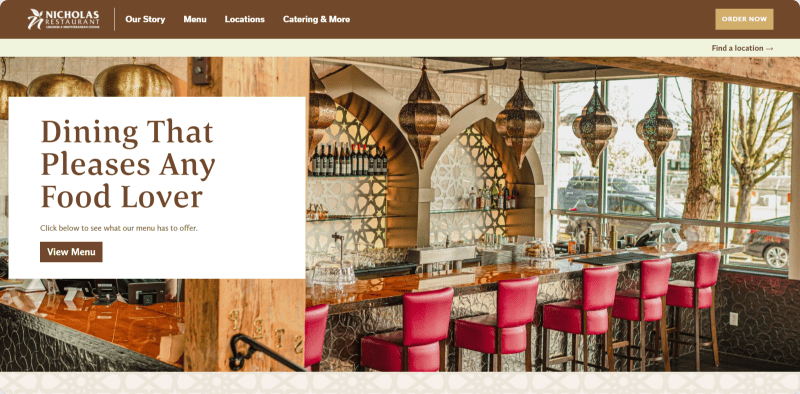
These decades of operational experience earned them recognition as Portland’s first family of Lebanese Cuisine. With such pedigree, you can imagine how much revenue they were losing due to the negative impact of the Pandemic.
Hilda Dibe, Nicholas’ youngest daughter who took over the business from her parents in 1996, acknowledged this.
In an Interview with Nina Silberstein of The SouthEast Examiner, she said:
“We were doing our thing, making sure the food was good and keeping the family recipes. We never had to advertise, and then the pandemic hit.”
It was a difficult situation she never had to face before.
Not one to give up without a fight, Hilda went back to the drawing board to brainstorm how to keep her family business running.
And for a business that relied heavily on word-of-mouth before the pandemic, they had to do something alien to them – marketing.
In Hilda’s words:
“It was definitely more marketing than I ever did in my life.”
Leaning towards more marketing than she’s ever done in her life produced both good and bad outcomes.
The good?
The marketing worked: It ensured Nicholas Restaurant kept new orders flowing despite having to shut down indoor dining and catering.
The bad?
Processing those new orders manually came with many challenges.
The Challenge: Manual Process Resulted in Loss of Time and Money
When the pandemic hit, those who previously looked away from marketing their catering business online had no choice but to turn to it.
Why?
Small and large caterers realized promoting their business online was an effective way of reaching new catering clients beyond their immediate environment.
But spending money to get customers through online channels like social media or Google paid ads has its caveat. Some of these caveats are:
- It becomes stressful and time-consuming to manage and process all these new orders manually.
- Customers will find it inconvenient going back and forth with you over the phone or email to place their orders.
- Worst off, losing after-hours orders because there’s no one available to speak with customers.
Juan, who was responsible for managing and processing orders, faced the heat of these challenges.
In his words:
“As far as losing money, sometimes we couldn’t get back to everybody in a timely manner. It was just me doing everything and it was hard. Plus orders could be easily forgotten because things were so disorganized when we were writing orders down on paper.”
The result of managing orders manually had other negative impacts.
First, the team at Nicholas Restaurant couldn’t attend to other important tasks. And this led to making avoidable mistakes with customers’ orders.
Juan voiced this frustration:
“It (processing orders manually) caused a lot of mistakes because sometimes I would put an order in for the wrong restaurant location by mistake.”
The worst part of this stressful manual ordering process?
Chasing customers for payment. It was like a cat and mouse game.
Here’s why:
When customers called to place orders, they didn’t have their payment ready. So you end up wasting precious time calling to remind them of their payment.
Juan found this process frustrating:
“A lot of times customers didn’t have their payment ready while I had them on the phone. It was definitely exhausting. Sometimes I would forget to call this person back to get payment. Like, ‘why didn’t they pay?’ Oh yeah, that’s right. I never got a hold of that person or they never got back to me.”
And when asked how long it took for him to chase customers for payment?
He replied:
“Easily, I would say anywhere between three to five phone calls and at least a day or two because sometimes they don’t get back to you. Then when they did get back to me, I was unavailable because I’m on the phone taking orders.”
Considering they were doing up to 50 orders per week and taking 15 – 20 minutes to process each manually, they were spending around 12 – 16 hours per week on orders.
Not to mention the extra time they spent chasing customers for payments instead of focusing on other revenue-driving tasks.
Hilda knew the implications of this on the balance sheets, hence the need for a solution. And a solution she did find.
She turned to HoneyCart Online Catering Software to help manage drop-off catering orders more efficiently, save costs, save more time and generate more revenue.
The Solution: Commission-free Catering Automation Software
Hilda’s quest for a catering automation software that was perfect for her business wasn’t a walk in the park. The large pool of online ordering systems combined with her busy schedule made it difficult to find the best one.
However, one fateful day, she received an email.
The email mentioned HoneyCart, a subscription-based software with interesting drop-off catering features. Hilda thought she had found “the one,” so she took it for a spin.
She was eager to explore whether the software was user-friendly for her, her staff, and customers, especially those who aren’t tech-savvy.
Once she confirmed it was super-easy to use, the rest was history.
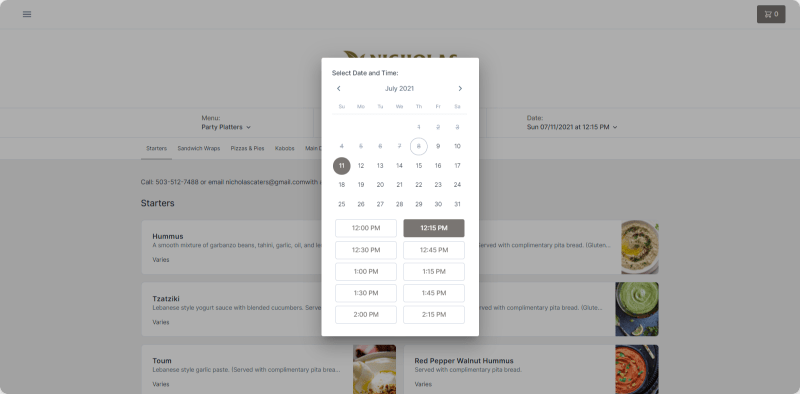
With HoneyCart, Nicholas Restaurant automated its entire ordering process.
As a result, they could easily:
Set Ordering Policies
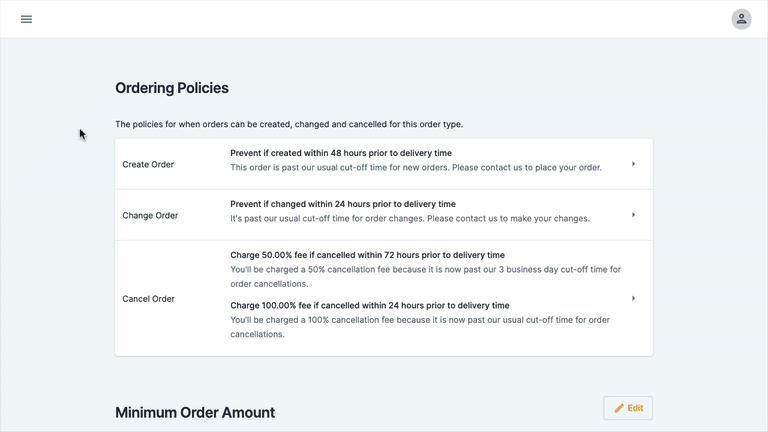
Manage Catering Menus
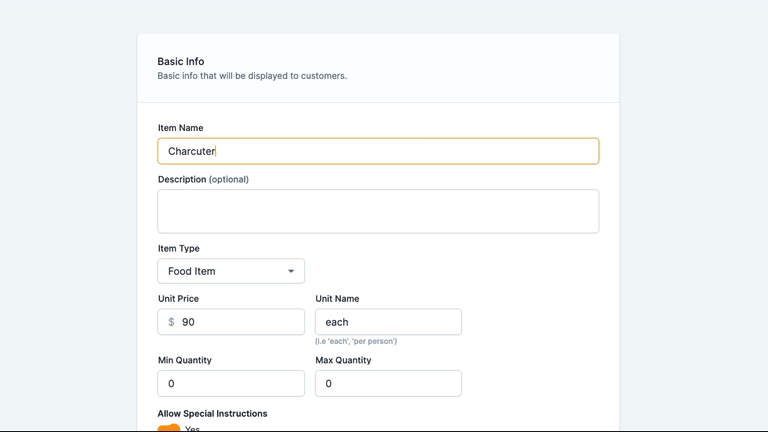
Choose When Specific Dishes are Available
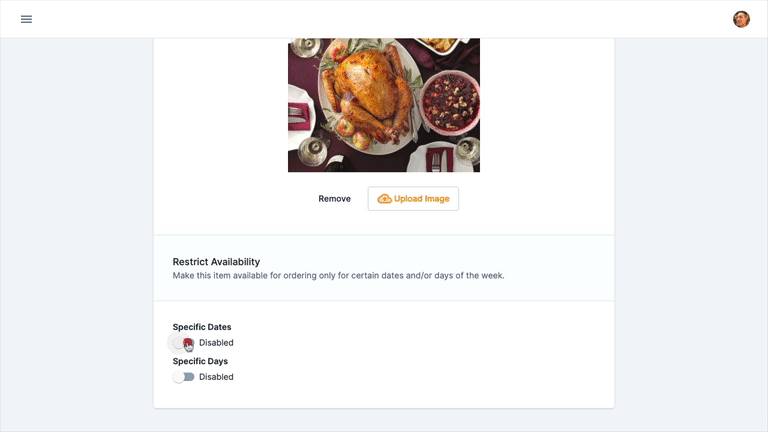
Store Customer’s Credit Card to Charge Later
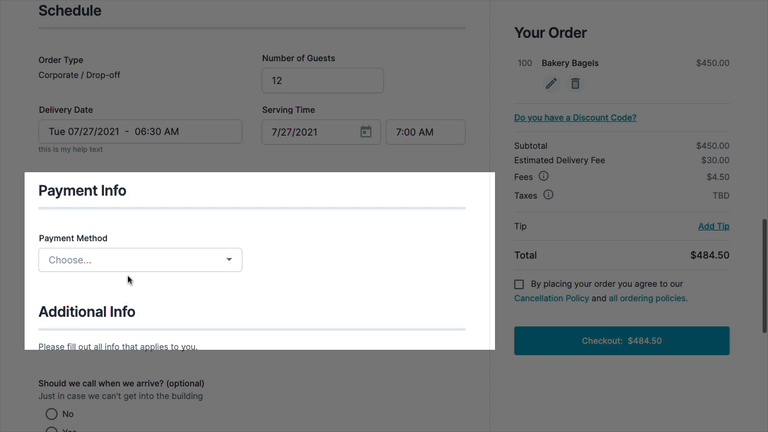
As a result of finding an ideal solution, they were no longer losing business because customers could simply place orders whenever they liked.
Doing this made life at Nicholas Restaurant a lot easier for Juan.
In his words:
“There are people that I don’t even have to talk to now. They just place their order. They go on our website, see we offer catering, click around and next thing you know, there’s an order. Now I wake up in the morning, I check my emails and there are usually three or four new orders. A lot of our orders come in after hours.”
Furthermore, it makes processing catering orders faster as the staff is well-informed ahead of time about new orders.
“It’s made it easier for our kitchen prep too because they know right away what orders we have. Overall, HoneyCart has made it easy for all of our staff that are involved with our catering orders.”
Without a doubt, HoneyCart has made its catering business more organized and efficient when dealing with catering orders.
But what would have happened if Hilda didn’t identify a solution?
Well, according to her:
“Hire more people and pay too much in wages.”
And as you already know, saving costs is a priority for every business owner as they try to get back on their feet post-pandemic.
The Result: Nicholas Restaurant Saved 12 Hours Per Week and Got 18 More Catering Orders
Since Nicholas Restaurant started using HoneyCart to manage their catering business, they’ve noticed an increase in sales.
And the reason isn’t far-fetched.
HoneyCart provides a unique customized link to your online catering menu where customers can place orders on their own at any time of the day (or night).
So when Nicholas Restaurant started marketing online, they placed their customized HoneyCart link on their social media pages and website for customers to order directly.
This way, their customers could simply place orders without waiting for business hours to speak to staff.
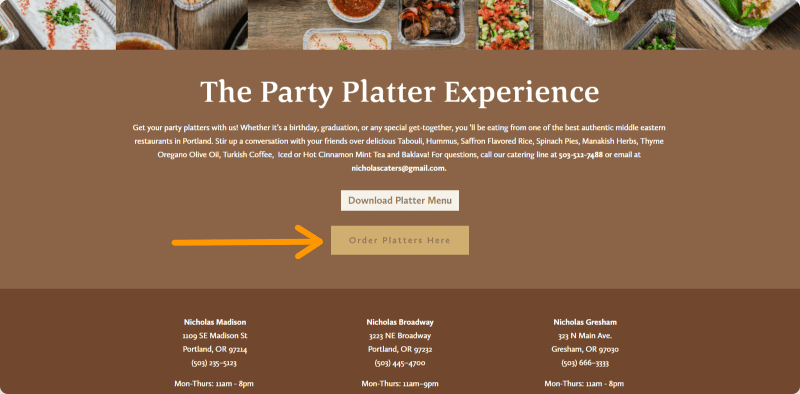
The result?
Reducing the time it took to process orders from 20 minutes down to 5 minutes. In other words, HoneyCart saved them up to 12 hours per week in productivity.
“Using HoneyCart has cut the time it takes for us to process each order dramatically versus doing it the old way. It usually took us about 15-20 minutes before, now it’s more like 5 minutes.”
As such, they were able to get more catering orders because they could focus more on marketing.
“It (HoneyCart) helped us get about 18 more catering orders per week.”
Mind you, this wouldn’t have been possible if their customers found the software difficult to use. So it meant they didn’t lose customers to competitors because of “bad user experience.”
Customers loved how easy and convenient they could place their favorite Lebanese and Mediterranean dishes orders from Nicholas Restaurant via HoneyCart.
In short, according to Hilda:
“We had a customer say that this was the easiest app we found, very well constructed.”
In addition, automating your catering business frees up valuable time to attend to other important tasks.
Juan, the Catering Manager found this to be the case when he started using HoneyCart to process orders.
In his words:
“Before I was tied to my desk and to the phone because the only way you could place an order was to talk to somebody. Now it’s kind of like Wi-Fi where you’re not just tied to your desk anymore. I can actually walk around and get other work done.”
And since they were also saving up to 12 hours per week in productivity, he uses the free time to help out in other parts of the business:
“Now I can follow up [about service] with customers more than I’ve been able to in the past. I can go out and do deliveries if I need to. Or when the restaurant, which is directly across the street, gets busy, I can just take orders for the restaurant.”
Conclusion: Transform Your Drop-off Catering Business With HoneyCart
If you look at Hilda’s story closely, you’d realize her goals are not so different from other drop-off catering business owners.
And what are these goals?
- Save costs
- Increase productivity
- Generate more revenue without hiring more staff
- And of course, make the ordering process easy for customers.
All these and more are what automating your catering business gives you.
So it’s easy to see why Hilda took the smart option of using HoneyCart to manage her catering operations.
And the transformation has been glorious.
In her words:
“We love it very much! Life before was so hectic. Now we work faster and efficiently.”

But having great software to automate catering orders isn’t enough.
You also need a great team behind the software to sleep well at night, knowing they’ve got things covered. Hilda also got that with the HoneyCart team:
Speaking about HoneyCart’s support team, she said:
“Always on point. Always willing to help. Great follow through.”
Subsequently, when asked if she’d recommend HoneyCart to other caterers, Hilda smiled and said:
“Yes, because it makes our lives a lot easier and gives customers more control and freedom to order whenever they want, rather than wait for us to open.”
As a drop-off caterer, what more could you ask for?
Like Hilda, you too can save time, save costs, streamline your catering processes, increase productivity and sales for your catering business.
The best part?
You can achieve all that without sacrificing commissions to third-party sites.
Ready to see how HoneyCart can increase your catering sales as it did for Hilda of Nicholas Restaurant?

